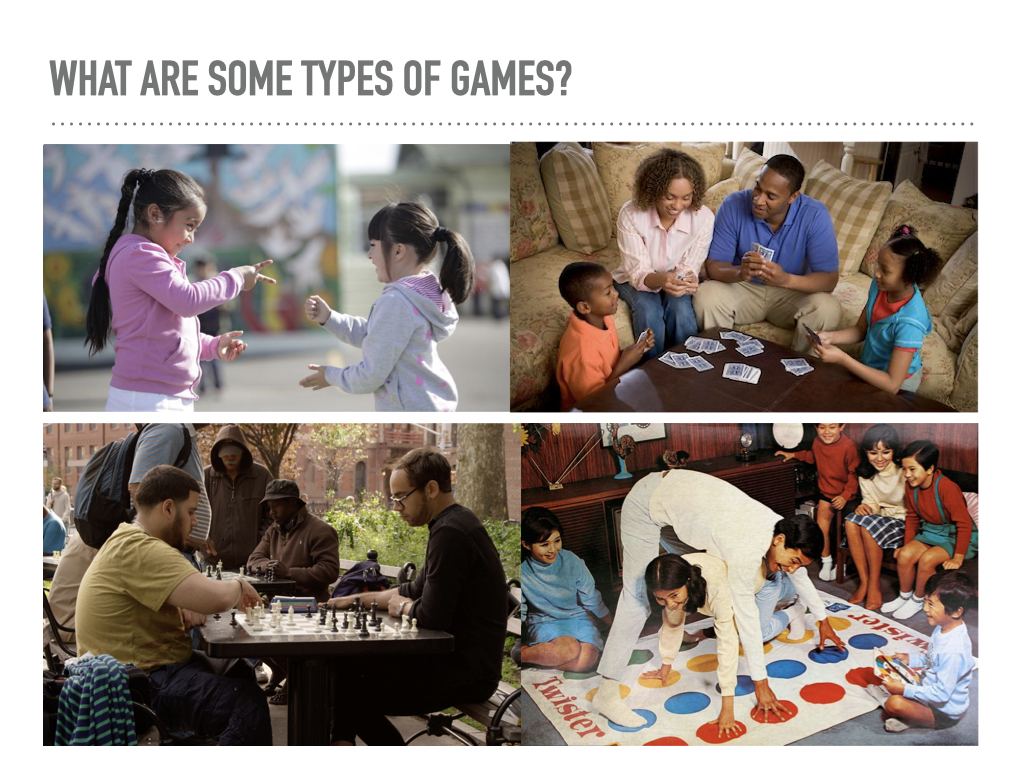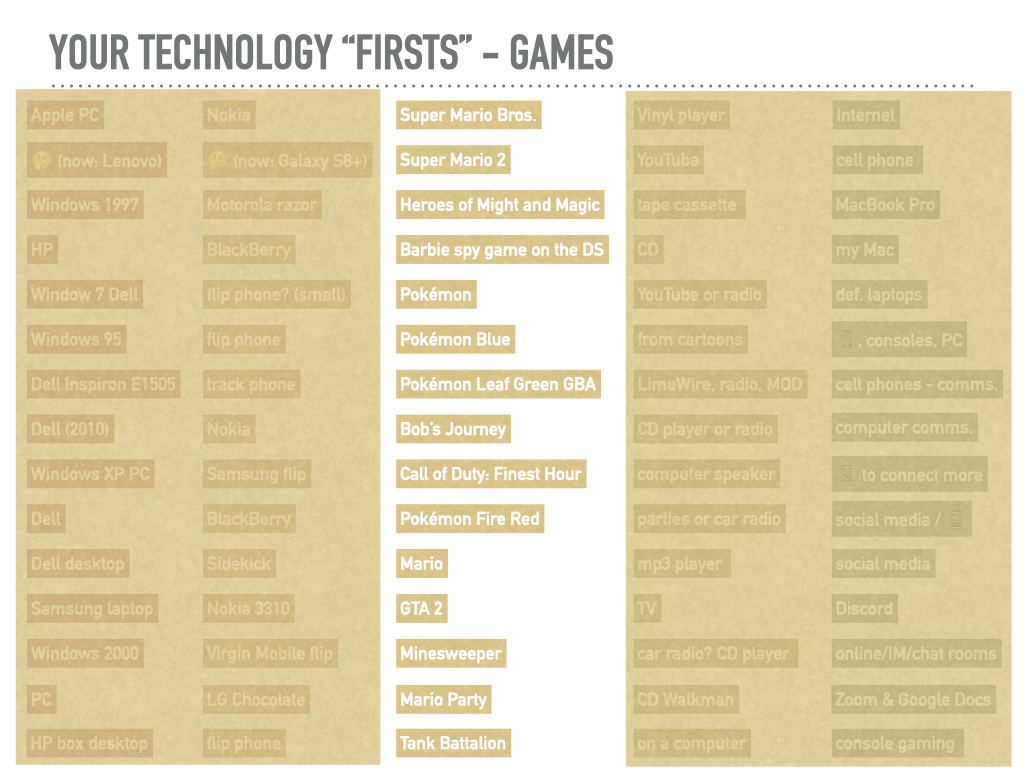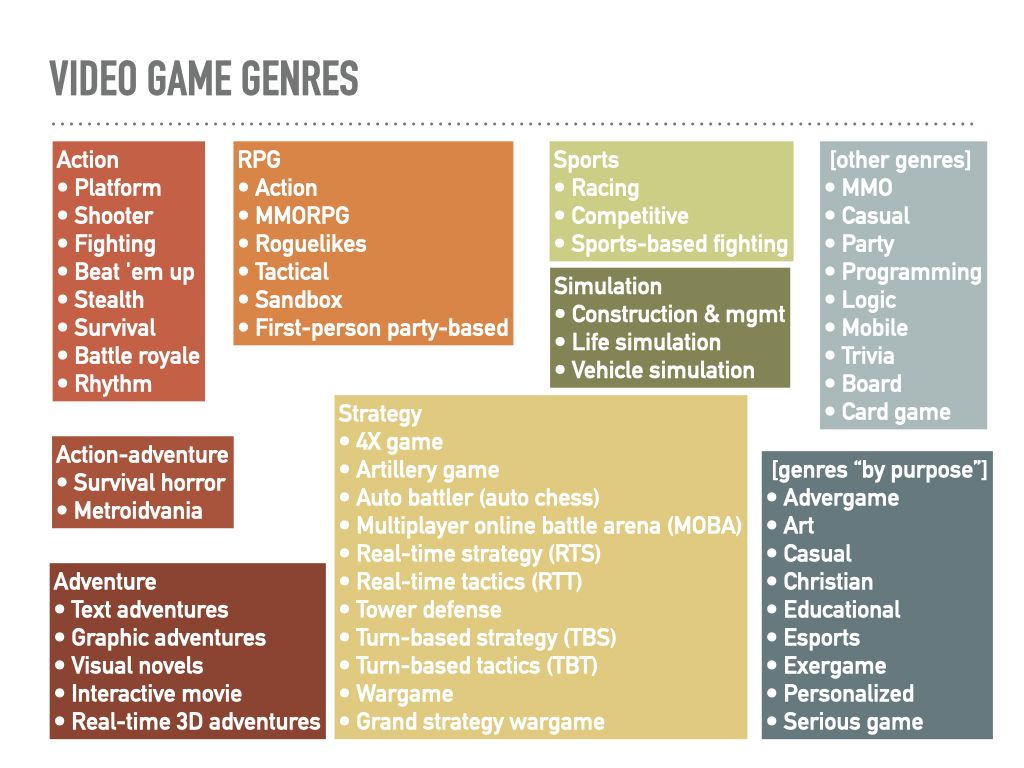We then began the “Games and Games Design” overview with a discussion of types of games, along with situational contexts, factors, reasons, etc. for playing each type of game—

In the slide above, we have an example of RPS (Rock, Paper, Scissors) on the upper left, which is known as a “hand game, simultaneous, zero-sum” and dates all the way back to the Chinese Han dynasty (206 BC – 220 AD). This is a quick, simple, fun game that’s often used for making decisions.
On the upper right is an example of a card game, which is something families can play together in a home environment (for example, when the cable or internet service goes down).
On the lower left is an example of a board game, in this case, chess. One major reason to play chess is to exercise strategic thinking, and it requires deep concentration.
On the lower right is an example of a party game, in this case, Twister, which turned 50 in 2016. Twister is similar to a board game in that it requires the mat with colored circles in order to play. It’s often played with friends in a party context as a way of being uncomfortably silly, and it’s physical in that one’s whole body is like a game piece.

The upper left image in the slide above shows Monopoly, a multi-player board game that references life choices and is ultimately about acquisitions (e.g. money and property). In many ways, it has an underlying ideology of Capitalism.
The image in the upper right shows people playing arcade games. These games require players to stand and for others to crowd around and watch. Arcades were often situated in malls, but are now often in laundromats and bars. They have a nostalgic appeal.
On the lower left, you see two guys playing some kind of video game. These require a game console (e.g. Playstation). They’re almost always played at home with players sitting on a couch.
On the lower right, you can see an example of a Nintendo’s Wii sports game (golf, in this case) being used in a senior center to help keep seniors physically active and/or to help them regain movement abilities.


Above is a slide showing some of your first games. Remember how we unpacked these in a previous class, pulling out companies, consoles/devices, and categories? Now think about your experience of playing these firsts (family, social, physical, accessibility, affordability, motivations, etc.) in relation to the types of games you currently play. And then think about what genres they fit into—

Above are some common game genres to be thinking about while you do Assignment 3 (due before Wednesday’s class—see the Assignments page), and in relation to the discussion we’ll have about your Assignment 2 responses in the next class.
Also review The Art of Game Design: A Book of Lenses https://iums.ac.ir/uploads/%5BJesse_Schell%5D_The_Art_of_Game_Design_A_book_of_l(BookFi).pdf
Print this page


Leave a Reply